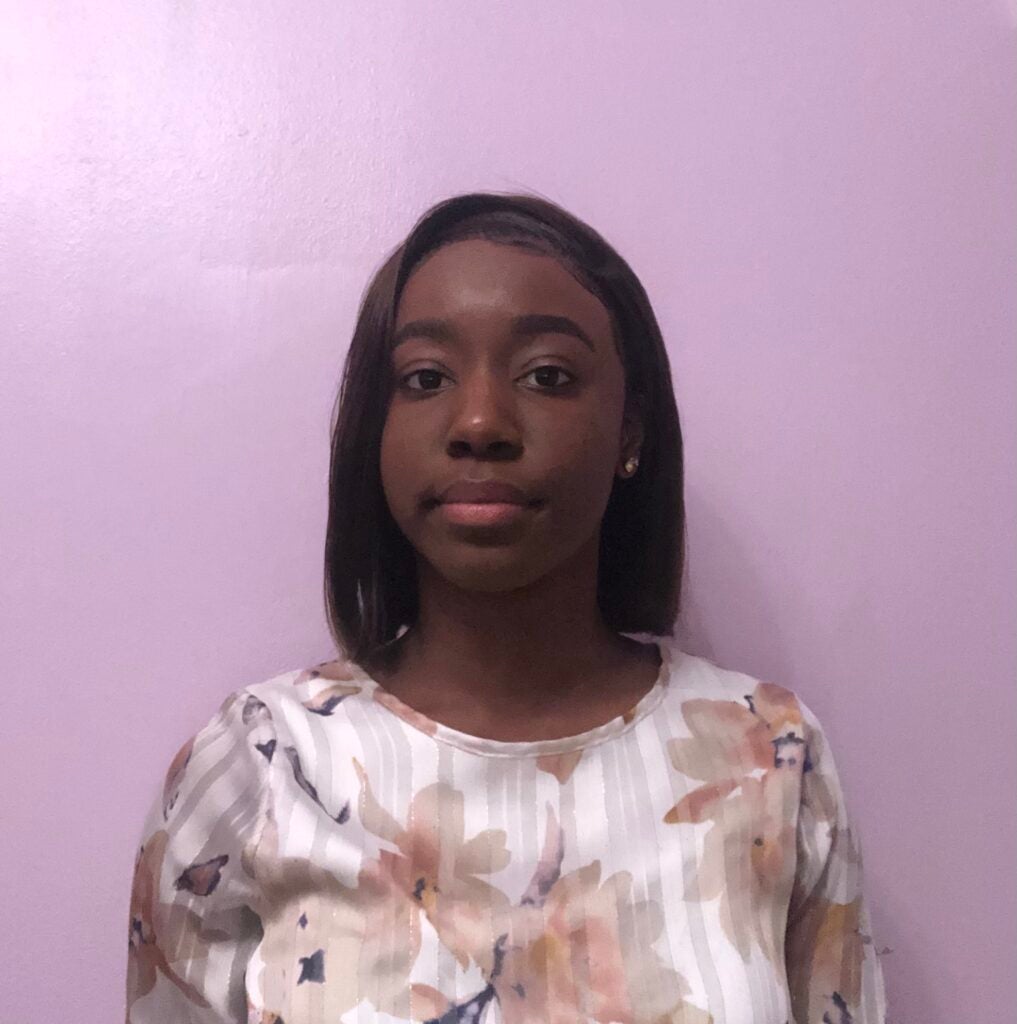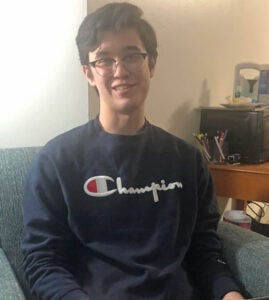Students Reflect on Prof. Morrison’s course “Race, Representation, and Renaissance”
Kiara Finlay (C ‘22) and Elliot Segnini (C ‘23) share how Prof. Morrison’s ENG 210 class “Race, Representation, and Renaissance” course made them think differently and how it impacted their other studies.
How did Dr. Morrison’s “Race, Representation, & Renaissance” course expand your engagement with critical and creative work in the humanities?

Kiara Finlay (KF): The syllabus was rich in both theoretical and fictional works that are not typically a part of the American English curriculum. Examining Irene Redfield’s navigation of racial and social class binaries as a biracial woman in 1920s Harlem (“Passing”) is not an experience I was privy to prior to this class, nor one that I realized would be so impactful. In turn, I found Their Eyes are Watching God and our subsequent discussions of womanhood to be a vital component in my own journey of self-love and growth. Previously, the closest I’d gotten to these or other literary expressions of blackness, was an occasional poem or optional book report. This course was instrumental in helping me gain greater understanding of the complexities of the black literature being produced during these time periods.

Elliott Segnini (ES): “Race, Representation, & Renaissance” is not an English course where I felt limited to any one pathway for engaging with critical and creative work. Dr. Morrison’s course incorporated a wide range of genres and media for us students to engage in the material and connect it to our current moment. We were encouraged to read essays, personal narratives, and poetry as well as watch black films and listen to blues music. Through enriched discussions, rewarding writing assignments, and collaborative group work, I was able to critically apply the material to my daily life in a significant and meaningful way.
Describe the assignment that was most impactful for you.
KF: Dr. Morrison assigned a group project, in which we were to create a digital museum exhibit featuring “artifacts” that depicted an underlying theme of the Harlem Renaissance. My group proceeded to explore the ways that the Renaissance facilitated socioeconomic mobility and opportunities for black entrepreneurs to acquire wealth. I found it both empowering and enlightening to take simple symbols, like a Chesterfield coat, or a photograph of ‘Creole Goddess’ Josephine Baker, and demonstrate how they signified a progressive movement towards wealth and autonomy for black people.
ES: The most impactful assignment from “Race, Representation, & Renaissance” was our final assignment in which we created a time capsule that was meant to be found in a century’s time. The assignment was to write a letter that reflected on an aspect of our current moment through cultural objects produced in 2020 and contextualize this moment with the Harlem and Chicago Renaissance. For my letter, I demonstrated how protest songs produced in response to the murder of George Floyd fit into a larger historical context of black representation that had been fashioned, in part, by Ida B. Wells and Claude McKay a century ago. Seldom do we get the chance to fully grasp what was happening in a historical moment as social movements get co-opted or repressed and creative works get interpreted and re-interpreted. What remains with us today are fragmented relics, distorted memories, and constrained expressions of a more coherent whole from the past. The significance of this assignment stems from its ability to accurately connect representations of the past to the present in a tangible way. I found this exercise impactful for the way I approach my current studies and my daily life.
What questions or interests did the course spark that you’re excited to continue delving into during or beyond your studies at Georgetown?
KF: One of our assigned weekly readings included Langston Hughes’ “Negro Artist and the Racial Mountain” and George S. Schuyler’s “The Negro-Art Hokum”. These two pieces sought to examine the bounds of black art, and whether it served one’s best interest to conform to American standardization or be unapologetic in the art we produce. It is a debate that I often grapple with as a dancer; authenticity is difficult to strive for in a world where whiteness is still the status quo. For Langston Hughes or Bessie Smith, the potential for criticism was just as vast, if not more. Still, seeking to break those barriers is part of our responsibility, so that we can move towards greater representations of the many subcultures and nuances of black life that the world has been content to ignore.
ES: Central to “Race, Representation, & Renaissance” was examining the extent to which black representation was both expressed and suppressed in contexts of tyranny, autonomy, and liminal spaces. We were able to understand the destruction done to black communities in the United States through negative representation. I want to continue looking at how representations of race, gender, and class are liberated and repressed. These constructions exist in a state of continuous struggle for autonomy and I am interested in studying how broader social movements organize around these constructs and how elites work to repress or co-opt these movements.
How did Dr. Morrison’s course help you to reflect on and/or connect with the historic moment during which you are living?
KF: Our explorations of the Chicago Renaissance, and the repercussions that followed served as a poignant but painful indicator of the ways blackness has and continues to be boxed into spaces in American society. I thought Dr. Morrison’s decisions to discuss restrictive covenants and work through an interactive redlining map were quite effective in displaying the political measures that worked so actively against black people. Given the difficulties that formerly incarcerated persons are still experiencing today in terms of finding affordable housing or just general re-integration, I am reminded that these concepts are not new, and that just as in the early 20th century, there are opportunities to subvert and escape these limitations if we are willing to do the work to find them.
ES: One element of Dr. Morrison’s course that helped us to reflect on our current historic moment was its commitment to understanding how historical representations connect to the present day. In our discussions on the Chicago Renaissance, we looked at a digital redlining map and were encouraged to examine how redlining affected our local communities. Seeing this discrimination mere miles from my home made me more aware of the pervasiveness of redlining. This exercise helped me to reflect on these discriminatory practices not as isolated instances of an individual’s racism, but as a systematic denial of services on the basis of race and class. Additionally, I was able to connect these policies to the inequalities we see today in education, health, and wealth and all this made for a richer discussion among the class.
